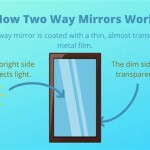How to Enable Screen Mirroring on iPad Pro
Screen mirroring allows users to project their iPad Pro's display onto a larger screen, such as a television or projector, enhancing presentations, entertainment, and collaborative work. This article provides a comprehensive guide on how to enable and utilize screen mirroring on an iPad Pro.
Understanding AirPlay
Apple's proprietary technology for wireless streaming and screen mirroring is called AirPlay. It enables users to share content, including audio, video, and the entire screen display, from an Apple device (like an iPad Pro) to a compatible receiver, typically an Apple TV or an AirPlay 2-compatible smart TV.
Prerequisites for Screen Mirroring
Before initiating screen mirroring, certain prerequisites must be met. Firstly, the iPad Pro and the receiving device (Apple TV or smart TV) must be connected to the same Wi-Fi network. This shared network connection facilitates communication between the devices. Secondly, the receiving device must support AirPlay. Most modern Apple TVs and a growing number of smart TVs from various manufacturers offer AirPlay 2 compatibility. Confirming compatibility is essential for a successful mirroring experience.
Steps to Enable Screen Mirroring on iPad Pro
Initiating screen mirroring on an iPad Pro involves a few straightforward steps. First, access the Control Center. This can be done by swiping down from the top-right corner of the screen on newer iPad Pro models with Face ID, or swiping up from the bottom of the screen on older models with a Home button. Once the Control Center is open, locate the "Screen Mirroring" icon. This icon resembles a rectangle with an upward-pointing triangle at its base.
Tapping the "Screen Mirroring" icon presents a list of available AirPlay receivers on the network. Select the desired receiving device from this list. If prompted, enter the AirPlay passcode displayed on the receiving device's screen. This security measure ensures that only authorized users can mirror their screens to the device.
Troubleshooting Screen Mirroring Issues
Occasionally, users may encounter difficulties when attempting to screen mirror. One common issue is the inability to locate the receiving device. This can typically be resolved by verifying that both the iPad Pro and the receiving device are connected to the same Wi-Fi network and that the receiving device is powered on and has AirPlay enabled. Restarting both devices can sometimes resolve connection issues.
Another common problem is poor video quality or lag. This often stems from network congestion. Minimizing the number of devices utilizing the Wi-Fi network can improve performance. Moving closer to the Wi-Fi router can also strengthen the signal and improve streaming quality. Finally, ensuring that the iPad Pro and the receiving device are running the latest software updates can address software-related compatibility issues.
Mirroring to Devices Without Native AirPlay Support
While AirPlay is the most streamlined method for screen mirroring from an iPad Pro, options exist for mirroring to devices that do not natively support AirPlay. Third-party apps, available on the App Store, can facilitate mirroring to some devices. These apps often require installation on both the iPad Pro and the receiving device (e.g., a laptop or a non-AirPlay compatible smart TV). Researching and selecting a reputable third-party app is crucial for a positive mirroring experience.
Optimizing the Mirroring Experience
Several strategies can enhance the screen mirroring experience. Adjusting the screen brightness on the iPad Pro can optimize visibility on the larger display. Similarly, managing the audio output ensures that sound is routed correctly to the receiving device's speakers or connected sound system. Familiarizing oneself with the specific settings and capabilities of the receiving device allows users to tailor the mirroring setup for their needs.
For presentations, utilizing the iPad Pro's built-in presentation modes can further enhance the experience. These modes can minimize distractions and optimize content visibility for the audience. Practicing with the screen mirroring setup before a presentation ensures a smooth and professional delivery. Being prepared and understanding the functionality contributes to a successful mirroring experience.
Using Screen Mirroring for Specific Applications
Screen mirroring offers versatility for a range of applications. For presentations, mirroring allows the presenter to move freely while their content is displayed on a larger screen, enhancing audience engagement. In educational settings, educators can share instructional materials with the class. For entertainment, users can enjoy movies, games, and other media content on a larger display. Exploring the various applications of screen mirroring can unlock its full potential and enhance productivity and entertainment.

How To Screen Mirror Ipad With Ipados 17

Use Airplay To Stream Or Mirror The Screen Of Your Iphone Ipad Apple Support

How To Use Apple Airplay Mirror Your Iphone Mac Screen On Tv Roku And More Cnet

3 Ways Of Ipad Screen Mirroring Pro Air Mini Supported

How To Connect An Ipad A Tv Or Display Airplay Adapter

Use Airplay To Stream Or Mirror The Screen Of Your Iphone Ipad Apple Support

How To Screen Mirror Ipad With Ipados 16

How To Use Screen Mirroring From Iphone Ipad

Use Airplay To Stream Or Mirror The Screen Of Your Iphone Ipad Apple Support

Enable Screen Sharing On Ipad








